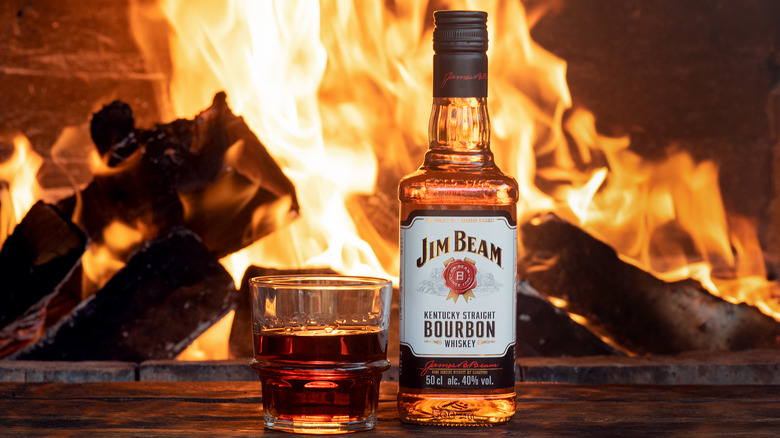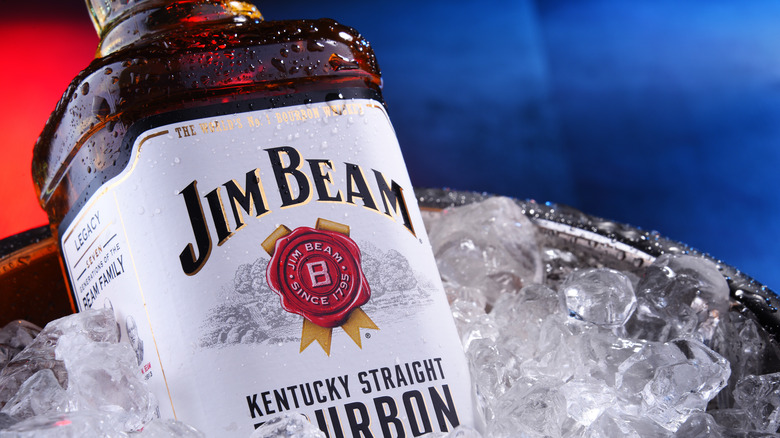The Budget-Minded Drinking Trend That's Taking Over Jim Beam
Alcohol has consistently risen in price since 1952, per In 2013 Dollars. From then to 2022, inflation rates for alcohol have increased 2.79% per year. This means that beverages costing $10 in 1952 would cost $68.81 in today's money. Interestingly, the possibility of a recession doesn't seem to be slowing down alcohol purchases; instead, it only impacts the place where alcohol is consumed (via Forbes). For example, when consumers are struggling more financially, they're more likely to drink at home than to go out to a bar.
Though sales haven't faltered, trends are ever-changing. It's worth noting that Gen Z and Millennials have been leaning toward non-alcoholic beers in 2022, according to Gifts and Decorative Accessories. Of those who decided to switch to alcohol-free choices, 44% wanted to improve their health, while 34% wanted to cut calories and sugar. However, even with many making this swap, alcohol sales still have a stronghold. However, a different trend is affecting the alcohol company Jim Beam.
A switch in interests
Jim Beam, a primary player in the bourbon market, has been hit with a few changes as inflation has impacted consumers' wages, per CNBC. According to CEO Albert Baladi, some customers are trading higher-end bottles for more affordable options. Due to many customers still opting for the more expensive bottles, the company hasn't lost money, with a sales growth of 13% for the first half of 2022. "[The trend of swapping for cheaper bottles is] something that's likely to stay with us as consumers cut down on large expenses," Baladi stated. "They're likely to want to treat themselves with little daily luxuries." Because of this, the company isn't worried about an economic impact.
In 2021, the results were the opposite; Jim Beam's sales rose 11% following a peaked consumer interest in premium spirits (via The Drinks Business). Baladi says the success of the company's premium beverages "relies on exceptional quality, superior storytelling, and executional excellence across consumer touchpoints."

